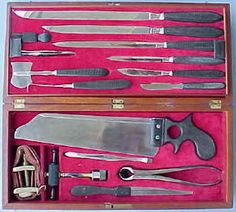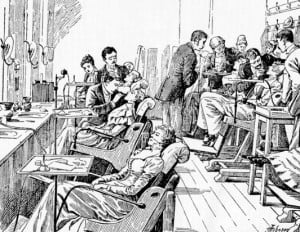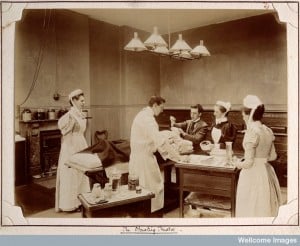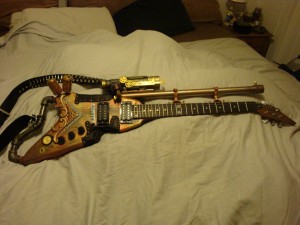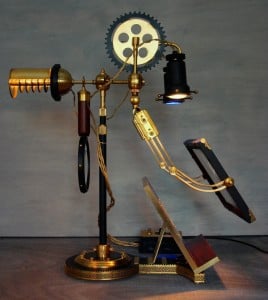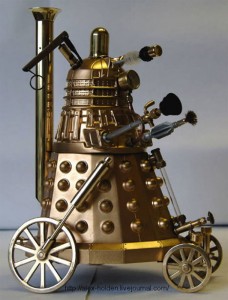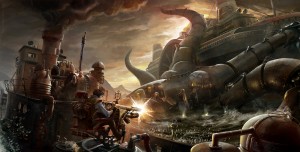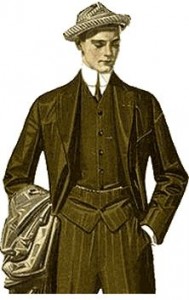During the Victorian Era, nearly one million patients were committed to “lunatic asylums”. Many of them were violent criminals who pleaded insanity, one of them possibly being “Jack The Ripper”. When pleading insanity in the Victorian Era, no psychiatrist was required, because there were no psychiatrists. All you had to do to plead insanity was act insane. A good lawyer, such as Mr. Jaggers would easily get you a committed and not executed. Many of the patients at the asylums would stay there until death. Many people were sent to asylums for minor offenses such as “stealing two blankets” or “being disorderly”. In 1845, the lunacy act was passed, requiring all counties to build asylums to accommodate the mentally ill. Many poor people went to asylums and sometimes they were used as a way to controll the poor. Miss Havisham would certainly not be committed to one of these “Lunatic Asyulums” In conclusion, many of the people paced in asylums were not mentally ill, asylums were used as a control method, and they were a place of despair for many Victorian Citizens.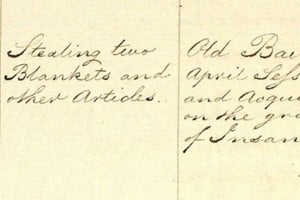
Medicine in the Victorian Era
Medical practices in the Victorian Era was not as sophisticated as it is nowadays. Back then, there were no special tools such as X-ray machines or stethoscopes.
Some doctors believed a remedy of mercury or arsenic would cure some illnesses. Obviously, we know that that is not correct and that those two things by themselves are very dangerous. Doctors also believed that the power of prayer and God alone would be enough to cure illnesses. One century later, however, the medical field would change because of new breakthroughs in medicine and science.
Part of the problem in London was that the city was overcrowded because farmers had moved their families to the city because the industrial revolution warranted large amounts of farmers useless. The overcrowding in the city combined with poor personal hygiene and no city sanitation services made it a petri dish for diseases. Disease such as smallpox, typhus, and tuberculosis were epidemic and highly contagious. Cholera was even more contagious however and spread fast (Robinson).
It was also found that poverty and disease were linked, meaning people in poverty were more likely to contract these diseases. When this link was discovered the “Poor Laws” in 1834 were updated but these did nothing to protect the poor. Further down the line, however, healthboards were set up to investigate nationwide sanitary conditions (Robinson). After this, a General Board of Health was established in Britain.
A man named John Simon investigated the investigated communicable diseases such as diphtheria, typhoid and smallpox. John Simon included scientific findings in his investigations as evidence. When he gained political influence, he used it to invoke new health legislations. The 1875 Public Health Act was one of the most extensive public health systems ever offered to Britain. It encompassed housing, sewage and drainage, water supply, and contagious disease (Robinson). This was another step closer to a healthier Britain.
New medical breakthroughs also influenced a change to more modern medicine. A man named Joseph Lister was responsible for the introduction of anesthesia into Victorian medicine (Robinson). This allowed surgeons to operate slowly and carefully with confidence. At the end of the century, another man named Robert Koch identified the organisms causing tuberculosis. This prompted more extensive public health campaigns.
In 1895, the X-ray was discovered in Germany. The first X-ray was taken in January 1896. Soon after, they were used to diagnose fractures, locate foreign bodies, and treat a variety of skin conditions (Robinson).
Many medical breakthroughs took place during Victorian times. And these are just a few of them.
Citation:
BBC News. BBC, n.d. Web. 15 Jan. 2016.
Medical tools at the time:
Dentists at the time:
Surgery in the Victorian Era:
Child Labour in the Victorian Era
Children in the Victorian Era were used to do jobs that adults thought children would be good for. Steam was the number one energy source during the Victorian times. Steam powered everything. It powered trains and steamships, and machines that they use in the factories. In order to make steam, you must have water and heat. To make heat, you needed to burn a lot of coal. In the 1800’s, the thought of using children for work in coal mines was a very attractive idea to mining companies. Children were much smaller, which enabled them to move into tight spaces and they demanded a lot less pay than adults.
In the mines, working conditions for the children were dreadful. It was dark in the mines, making it very hard to see. This would cause permanent problems with sight from constant strain on the eyes. Due to lack of ventilation, the coal dust was very thick air and because the children worked 12 to 18 hours a day, respiratory problems rose quickly. Children also developed permanent spine injuries because they had to walk stooped over all of the time. Children also had the fear that there would be explosions or cave-ins. Each day they would go to work not knowing what may happen.
In 1838 in Yorkshire, one day while the children were working in the mines, a fierce storm began. A warning was sent to the miners, and some tried to exit by going through a drift in Nabbs Wood. Sadly, a swollen stream near the entrance burst its banks. A huge amount of water poured into the drift and 26 children between the ages of 7 and 17, drowned in seconds. The youngest one was a 7 year old boy named James Burkinshaw. The oldest was a 17 year old girl named Hannah Taylor. These children were too young and should not have been working in the minds at such a young age.
Overall, children should not have been put through things that would give them permanent damage in life such as spine injuries, sight, and respiratory problems at such a young age.
The Steampunk Genre and its Many Different Categories and Styles
Steampunk can be defined in many ways. It can be applied to clothing, accessories, books, movies, and even works of art. It can get quite confusing while trying to find different and specific types of steampunk. Hopefully this blog will help clear things up.
Steampunk in General
Steampunk origins stretch back to the Victorian Era, based on the principal of “What if history took a completely different course and we never switched to electricity and we just used steam?” Steampunk is a genre based on this principal. The term ‘steampunk’d’ is used loosely to describe any versions of a typical item which has been *changed to look like a cross hybrid between bronze antiques and a pile of assorted machine parts (gears, springs, etc…) with some glass, polished wood, and etchings. Its also a book genre (some great books for teens include The Golden Compass, Mortal Engines, Clockwork Angel, Leviathan, and of course 20,000 Leagues Under the Sea**). These books are defined by their use of wacky and eccentric things that seemingly work, even though they work much differently than we might expect them to. Cities on wheels, dimensional rifts, mystical submarines, bronze weaponry, and more are included in this genre. Some games have this theme, including Bioshock II and 80 Days. Aside from basic steampunkery, Neo-Victorian Steampunk is basically just Steampunk set in the Victorian Era.
Steampunk In Art
Based of the items in these books, people have made some crazy creations. You probably won’t understand what I am talking about until you view some of this stuff. Look at these cool pictures! (please):
(You can click on the image to bring up the website i got it from)
These are (mostly) everyday objects that have been transformed into something brand flipping new. The great part about it is that if you have enough determination, you can do it yourself! Steampunk is great as a hobby, or if you are just feeling creative and you have a pile of junk lying around.
*Alternate: …changed to look like an antique fell into a bag of gears and then was spray painted brown and bronze.
**According to a pamphlet picked up at my local library- don’t worry, I read most of them!
Orphans and Adoption in the Victorian Era
Orphans were seen as very different in the Victorian age. The living and working conditions were pretty horrible and it was common for people, including many adults, to die of diseases such as tuberculosis, which led to At that time, there were thousands of orphans living in England. They were seen as a very low part of the community, and they had little to no status in society. When you think of an orphan nowadays, you probably imagine a child who has lost both of his or her parents. Although this was the same at the time, children who only had one surviving parent were typically seen as orphans as well.
Also, at this time, orphans were not portrayed very well in the Victorian age. Many people wrote about them in their stories. Orphans were seen as the “light in the tunnel” so to speak, as they were shown as kind and gentle people surrounded by bullies and rascals. Not only this, but they were always described as living in horrible and dreadful orphanages that provided little to the orphans and didn’t care about them at all. Although this doesn’t seem to be the case now and we hope that it wasn’t the case at that time, we don’t really know for sure how it was for an orphan back then. Most of the information that we know about this topic comes from whatever those authors wrote about them in their typically fictional stories. For all we know, the conditions in the orphanages could have been just as good as the conditions at home; we may never know for sure.
As for adoption, many orphans in the Victorian era ended up getting adopted by someone. They were usually adopted by a relative of some sort, whether it be an older sibling who is of age or a distant relative that they barely knew, but if they had no other family members, they could be adopted by a friend or a relative, Occasionally, however they were adopted by a complete stranger, as was the case of Estella. Adoption was informal because rules for adoption weren’t really established until the 1920s. From what we know of adoption, orphans who were raised in the same social class system as they were tended to be treated fairly and for the most part equally, but those who were raised by someone of the higher classes were typically treated much more poorly. Those of the higher class saw orphans as a nuisance and had no respect for them because they were lower than them. Sometimes they even refused to speak to the orphans because they thought of them as that much lower.
Sources:
http://www.123helpme.com/orphans-in-th-century-victorian-england-view.asp?id=154403
http://www.victorian-era.org/victorian-era-orphans-and-orphanages.html
Technology in the Victorian Era
During the Victorian Era was the Industrial Revolution where technology started evolving.
During this time was when steam started becoming a way to travel. Trains were invented during this time and were rapidly becoming popular. The Industrial Revolution was great for making more items. Before the revolution cotton took a long time to turn into clothes, but with the Industrial Revolution cotton was turned into clothes in almost no time. In 1845 2441 miles of railroad were opened in England making fast train travel a reality. In Great Expectations they traveled by carriage so I’m guessing it was written before 1845. I think it would’ve been interesting to be on one of the early trains because for most people back then, even though the trains only went 20mph at most back then, it was the fastest they had ever traveled and to them it probably felt like a roller-coaster
Isambard Kingdom Brunel built a new 3270 ton iron super, steam ship changing the way ships traveled back then.
In the 1820s the telegraph was invented so people would be able to communicate more easily. This also helped the railroad prevent crashes.
Despite the great success of new technology it caused great poverty and illness in the cities, like London. Before the Industrial Revolution most people worked in the countryside and farmed. When the Industrial Revolution came and more jobs were being offered in the city, everyone rushed to the city to get a job. For most people it was too late and all jobs were already taken. Now they were just in London with no money and no house. Dickens shows this side of London when Pip first enters London and sees all the poor people struggling for survival.
With the Victorian Technology England was able to trade and produce materials quicker and more efficiently.
Clothing for the Wealthy in the Victorian Era
In the Victorian Era, clothing was extremely lavish, made to show off wealth and status. Most articles of clothing were made by tailors, specially fitted to the Gentleman or Lady who ordered them. For the Ladies, the new trend of having your skirt spread over several unusually large hoops exploded. 
This bizarre fashion craze lasted for most of the Victorian period, and were frequently accompanied by an umbrella, which was also known as a parasol. These elaborate dresses were made of expensive silks and satins, typically worn by the upper class who were able to afford them. Scarves and corsets were also very popular at the time; the corsets were made to create a small waist and started at avery young age, encouraging the idea that women should have a thin, hourglass figure.
For wealthy men, fashion trends were more subtle. Clothing was mostly tightly fitted, especially coats, but loosened at the legs in the Era, giving a bit of “breathing room”. Most Gentlemen had “tails” for formal events. However, the Victorian Period also introduced a more casual attire for men during the day.
Scarves were not popular with just women. They were often worn by men, made of silk and came in all different bright colors.
For additional information, visit: http://www.aboutbritian.com
Pictures:
Picture 1 ~ http://www.pintrest.com/pin/251146116693429981/
Picture 2 ~ http://www.pintrest.com/pin/152207662376779398/
Cites used:
Rose, Tudor. “Victorian Clothes.” About Britian. N.p., n.d. Web. 19 Jan. 2016. <http%3A%2F%2Faboutbritian.com%2Farticles%2Fvictorian-clothes.asp>.
Who Killed The President???
We have learned a lot from “Great Expectations” about what life was like in the Victorian Era, but what was happening elsewhere in the world??? One of the most historical events from that time period was just “across the pond”. In 1865, the United States current President Abraham Lincoln was assassinated. This event sparked curiosity and suspicion around not only the nation, but with the world wondering “Who killed the President of the United States?”
On April 14, 1865, John Wilkes Booth, a Confederate not happy about his “country’s” recent loss in the Civil War, snuck into the Presidents Box while watching the hit play “Our American Cousin” at Ford’s Theatre in Washington D.C. Lincoln, accompanied by his wife ( Mary Todd Lincoln), Major Rathbone, and his fiancée, glanced over the balcony to see the play better. Booth after sliding past and not to mention killing anyone who got in his way, gently slid into the room, pulled out his Philadelphia Derringer pistol, aimed it at the president’s head, and pulled the trigger. Lincoln, immediately passing out because of complications from the bullet in his brain, slumps forward in his chair while his wife screams. Rathbone heard the shot and tries to stop Booth before being stabbed in his forearm with a knife. Booth then tries to jump from the box onto the stage, but his boot spur got caught in one of the flags draped over the side of the box while doing so. Booth than landed awkwardly on his left leg, mostly because his leg had just broke because of the twelve foot drop, and began crossing the stage, making the audience believe that he was part of the play. Booth than held his bloody knife over his head, and yelled “Sic semper tyrannis” which means in Latin “Thus always to the tyrants”. This was Booth’s way to get revenge to the Unionists for defeating the Confederates in the Civil War. Booth was later captured and shot to death in a barn after several days “on the run”.
These events may not be mentioned or even thought of in “Great Expectations” but in reality, the Civil War and the President’s assassination was something that affected the world. One of the United Kingdom’s greatest allies were at war with their fellow man and at one point, had no leader because of a rebellious act.
If you are more interested in this life changing event, these books and links below are sure to help you discover the history behind this historical time.
https://en.wikipedia.org/wiki/Assassination_of_Abraham_Lincoln
http://billoreilly.com/killing-Lincoln
http://killinglincoln.nationalgeographic.com/
Written By lalover7649
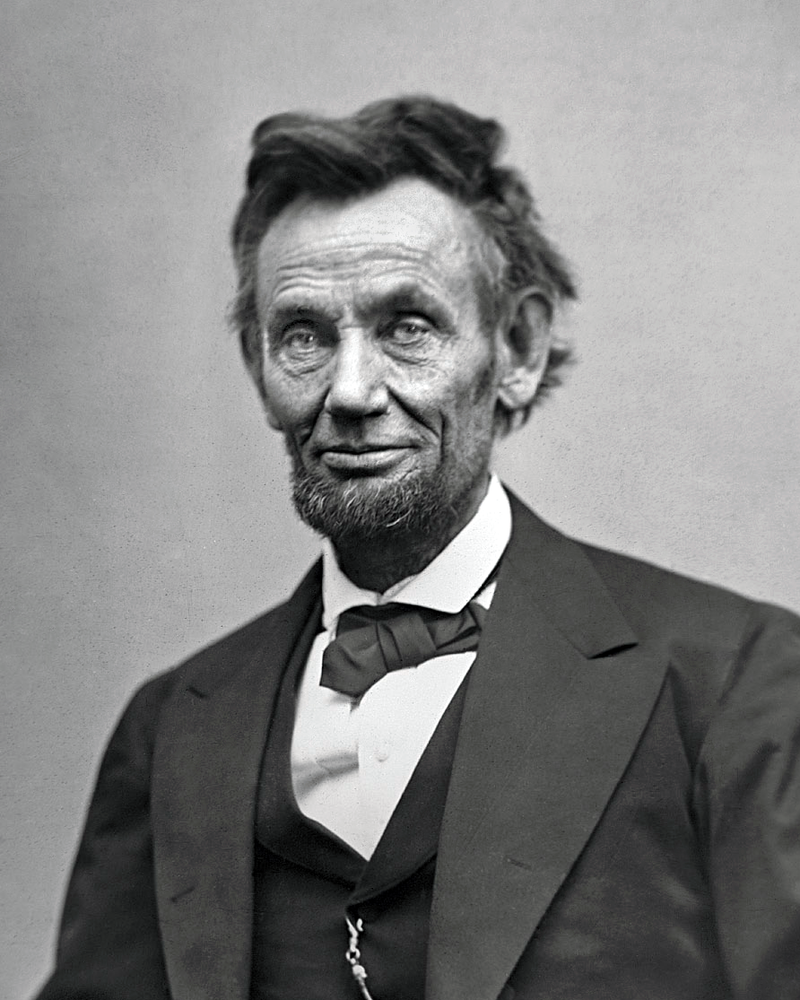
A Portrait of Abraham Lincoln, www.loc.gov, February 1865
Sports
Hello Grape Expectations, this is is Joseph and I am going to inform you about the Sports and Games that evolved during the Victorian Era. In the 21st Century sports and games are some of the most common hobbies/ entertainments for people, but a lot of these popular activities had been created in the 19th Century. Here are a few of the most known activities: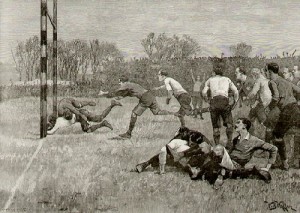
- Rugby was a popular game, which rules were drawn up in 1845, and later led to the start of football in 1863. The first international was in 1872 held between England and Scotland.
- For some quick fun in your yard many people played lawn tennis which was invented in 1873 and anyone could play. This new sport differed from regular tennis because the court did not have side or end walls.
- In 1867, John Graham Chambers drew up a list of rules for boxing. Soon after, the Queensberry Rules were written making boxing more dangerous, but also more entertaining and grew larger crowds.
- Volleyball was invented in 1895 by William G. Morgan and was designed to be a combination of basketball, baseball, tennis, and handball with a net 6’6 high.
Other popular games played during the Victorian Era included: Cricket, Croquet, football (soccer), netball (handball), Basketball, and horse racing.
Even though people of the 19th Century had very little leisure time, they still took pride in their sports and games. If you are looking for more information about this topic I have listed a few sites I encourage you to check
out!
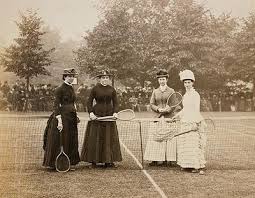
Want more:
http://www.victorianbazaar.com/hobbies.html
http://www.bbc.co.uk/history/british/victorians/sport_01.shtml
Amelia Dyer: The Infamous Baby Farmer of the Victorian Era
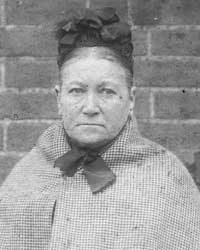 Amelia Elizabeth Dyer, known as the most profuse ‘baby farmer’ in all of Victorian England, was said to have murdered and neglected over approximately 400 babies and infants for almost 20 years without any raised suspicion. After failing to be a nurse, Amelia resorted to getting amiable amounts of money in a more peculiar way. She decided to begin advertising herself to single and otherwise desperate mothers who did not wish to keep their illegitimate child any longer and were putting them up for adoption (illegitimacy and single mothers in particular did not go hand in hand at the time as it was frowned upon for a single mother to not be able to properly provide for their child). She would convince the parent that she was a trustworthy, respectable married woman who would ensure a safe and loving environment for their child. Not very long after receiving payment, she would either let the child die of starvation and neglect or with many other more profound methods (those can be up to your own interpretation as I’m trying not to get too morbid with the matter).
Amelia Elizabeth Dyer, known as the most profuse ‘baby farmer’ in all of Victorian England, was said to have murdered and neglected over approximately 400 babies and infants for almost 20 years without any raised suspicion. After failing to be a nurse, Amelia resorted to getting amiable amounts of money in a more peculiar way. She decided to begin advertising herself to single and otherwise desperate mothers who did not wish to keep their illegitimate child any longer and were putting them up for adoption (illegitimacy and single mothers in particular did not go hand in hand at the time as it was frowned upon for a single mother to not be able to properly provide for their child). She would convince the parent that she was a trustworthy, respectable married woman who would ensure a safe and loving environment for their child. Not very long after receiving payment, she would either let the child die of starvation and neglect or with many other more profound methods (those can be up to your own interpretation as I’m trying not to get too morbid with the matter).
Each time that there had been any possible raised suspicion surrounding the rising number of dead children that had been in her care, Dyer had “coincidentally” landed herself in mental hospitals in correlation to substance abuse of opium-based products and suicidal tendencies at around the same time. In 1879, she had been given a six month sentence of intense labor for neglect after a doctor that had taken care of the numerous deceased infants decided to report her, although she could not be sentenced to murder since there was no relevant evidence that she herself murdered the children since there were so many epidemics at the time that she could have used as a reason in her defense. Following her release and various trips to the mental ward, Dyer instantaneously returned to baby farming, although had no other option but to begin disposing of the infants herself. To avoid the police and parents who wanted their (now deceased) children back, she had to constantly change her name and move her business elsewhere. Soon enough, Dyer’s downfall began.
After detectives had brought together enough evidence that Dyer had in fact undoubtedly been an active serial killer, police raided her home and arrested her on April 4th 1896 and was charged for murder and would soon be put up for trial by execution after finding her guilty in court within only five minutes since using the excuse that she was insane clearly wasn’t a sustainable argument. On June 10, 1896, Amelia Dyer was hanged and killed at Newgate Prison. A few years after her death, laws in England surrounding unregistered adoption were initiated and baby farming was for the most part put to rest.
Sources:
http://murderpedia.org/female.D/d/dyer-amelia.html
http://www.murderuk.com/female_amelia_dyer.html
http://www.oldpolicecellsmuseum.org.uk/page/evil_female_murderers_part_3
http://www.prisonersofeternity.co.uk/amelia-dyer-baby-farming-and-murder/

